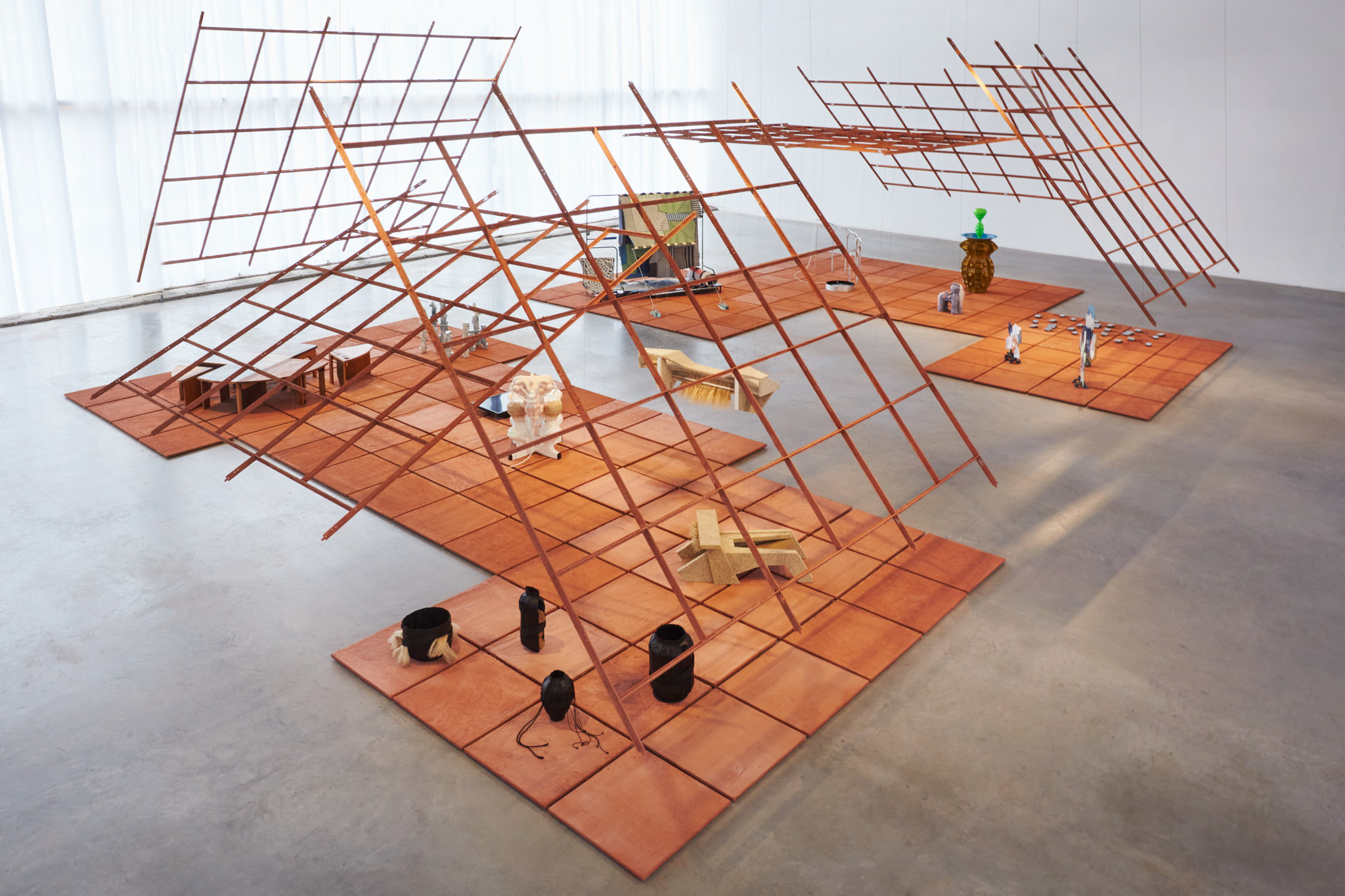In just a short two decades, Dutch Design Week has grown into becoming the largest industry event in Northern Europe, only outmatched on the continent by the grande dame of happenings Milan Design Week. While the former is far more commercial—focusing on the latest product launches—the former positions itself as a cultural platform. Held in the mini-metropolis of Eindhoven—famed as the historical seat of the electronics giant Philips and more recently the hallowed Design Academy Eindhoven—the festival pinpoints the latest zeitgeist, fosters new discussions, and celebrates talents—young and old—and in turn pushes the domain forward. More and more, industrial partners have also gotten involved, especially where their goals intersect with new dynamic approaches to material generation, production, and consumption. This recent influx of commercial interest is putting much of the rich speculative and experimental work percolating from every corner of this town to task and into application.
Located in the south of the Netherlands and a stone’s throw from Belgian and German borders, this post-industrial, provincial town has rapidly expanded in the past twenty years. Tech companies have moved in but without pricing everyone else. Their increased presence seems to seamlessly match with the many independent designers and small brands that have re-implemented and set up shop in former factories—many left behind by Philips. These studios, fabrication workshops, incubation labs, and other facilities have been transformed. Joining them is a slew of new retail, hospitality, and even residential developments, helping to alleviate The Netherland’s severe housing shortage.
Within this small, populous, industrious, and innovative country, design is seen as a major cultural and economic asset. From architectural and engineering solutions that keep the sea at bay in much of The Netherland’s northern regions to the explosion of autonomous, expressive, and conceptual talents and collectives that emerged at the turn of the 21st century—Droog Design, Maarten Baas, Jurgen Bey, Richard Hutten, Piet Hein Eek, Hella Jongerius, Wieki Somers, Hester van Eeghen, and Marcel Wanders; many of whom graduated from and taught at the Design Academy Eindhoven. Because of this, the government has a strong tradition of providing cultural and financial support to up-and-comers, new initiatives, educational institutions, and cultural platforms. While larger cities like Rotterdam and Amsterdam play a part in shaping this part of the national identity, Eindhoven is the true nucleus of dutch design.


Held from October 16th to 24th, the 2021 edition of Dutch Design Week was a smaller but equally impactful animal. Like most events reprogramed to take place this fall, the festival championed a quality over quantity approach. Spread throughout different parts of town, such as the Strip S and Sectie C industrial zones, this year’s event centerd on the theme: The Greater Number. Rather than just fixate on the doom and gloom of the mounting social and environmental problems facing society today, the event’s organizers decided to also highlight the dynamic research and solution-finding currently in play, finding the right balance between the calls for less and the demand for more.
Opening the event, Dutch Design Week ambassadors—renowned thought-leaders and practitioners selected each year to help promote the program—each developed and presented their own projects in response to the main theme. Noted architect and urban planner Floris Alkemade in partnership with the World Design Embassies platform mounted Labyrinth: the Art of Changing Direction. This interactive installation forced visitors to engage with the major challenges of the near future—climate change, biodiversity loss, housing shortages, loneliness, and ageing. In walking through the exhibition, they encountered artworks, film projections, and artifacts and chart a course through the uncertainty of our time. In this journey, they had to make hypothetical decisions that would lead them to one of two outcomes: complete apocalypse or a more harmonious, balanced, and fair world. “The road to the future is not a straight line, but a continuous search of wandering and changing directions, Alkemade explained. “Change is an art that requires improvisation, daring, and imagination.”
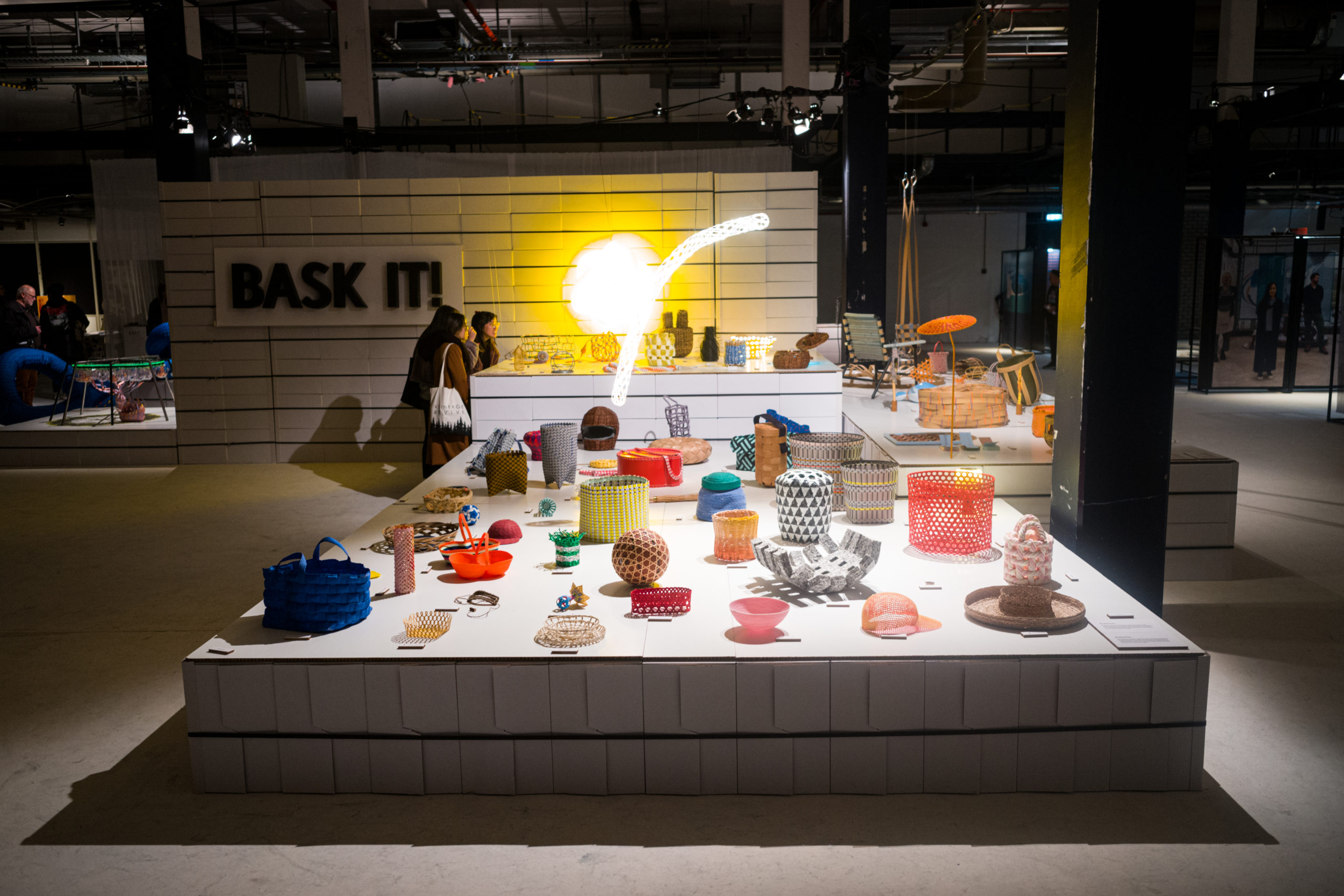
Natsai Audrey Chieza, founder of UK based think tank Faber Future, presented a survey show of young talents exploring our connection to nature while fellow Ambassador Christien Meindertsma delved deep in the scientific elements that make up her body and which will accumulate over the course of her lifetime. The conceptual designer’s profoundly personal yet universal exploration was multifold. Materialized in a three-dimensional periodic table with static-proportioned spheres, scale models, and projected visualizations, this speculative project asks visitors to reconsider how they consider material and resourcefulness. Also presented in the Microlab hall was an exhaustive physical display of works created through wildly successful Instagram-based intuitive and craft collective Basket Club. Exhibited in partnership with Crafts Council Nederland, the display featured everything from woven baseball caps to luminaires; all created using handicraft basket-making techniques. The HOW&WOW BASK IT showcase incorporated works by Bertjan Pot, Carole Baijings, Chris Kabel, Earnest Studio, Hella Jongerius, Rebecca Collins, Sebastian Herkner, Shigeki Fujishiro, Simone Post, and the initiative’s founders Adrianus Kundert and Jamie Wolfond; just to name a few.
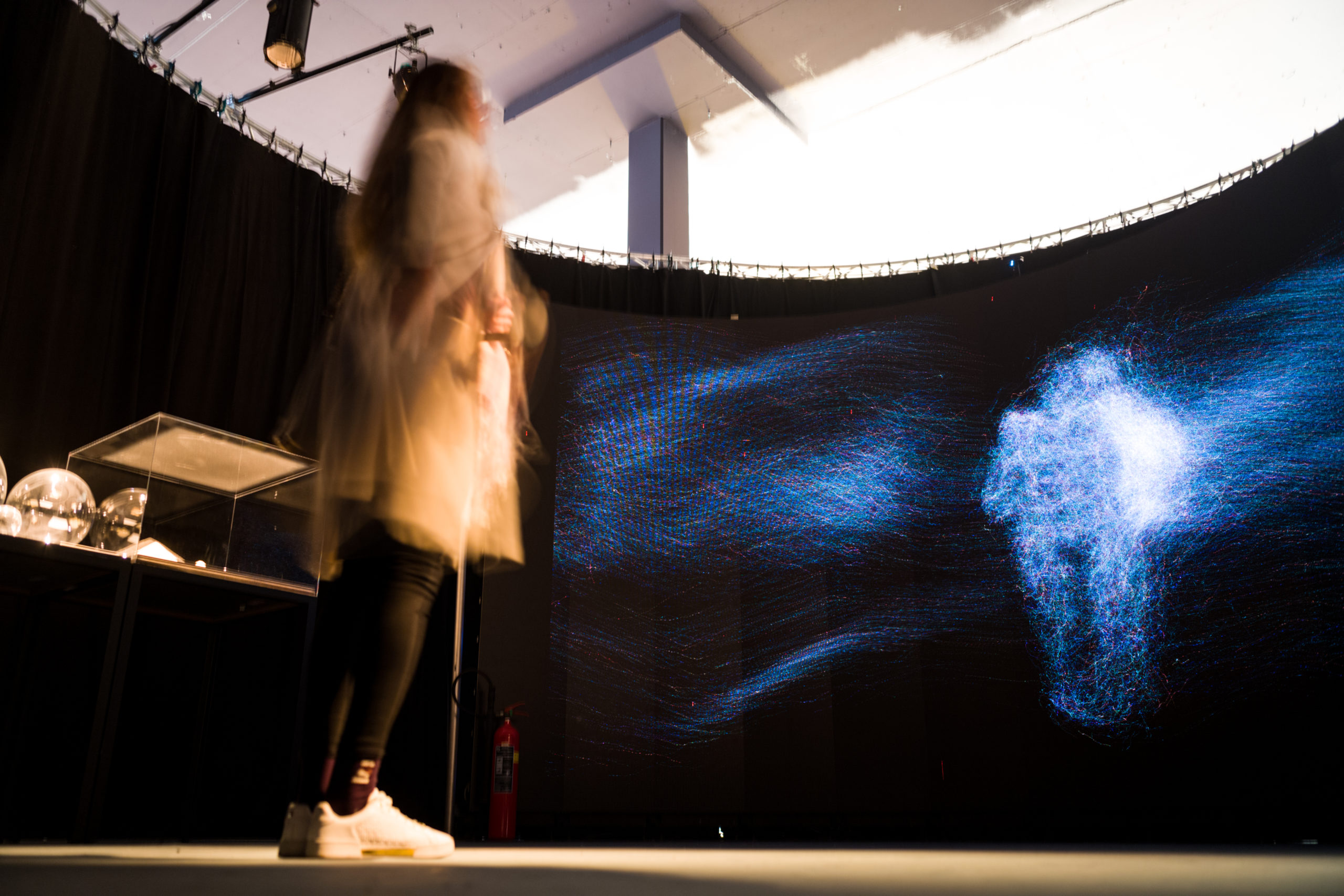
Nearby on the Kettelhuisplein, Lucas De Man’s Exploded View installation comprised a life-size home built entirely of bio-materials. Engineered using a circular production methodology, the structure incorporated modular components that can be taken apart and reinstalled innumerable times. The project intended to demonstrate the viability of implementing an endless supply stream of certain climate positive materials such as eggshells, algae, and mycelium.
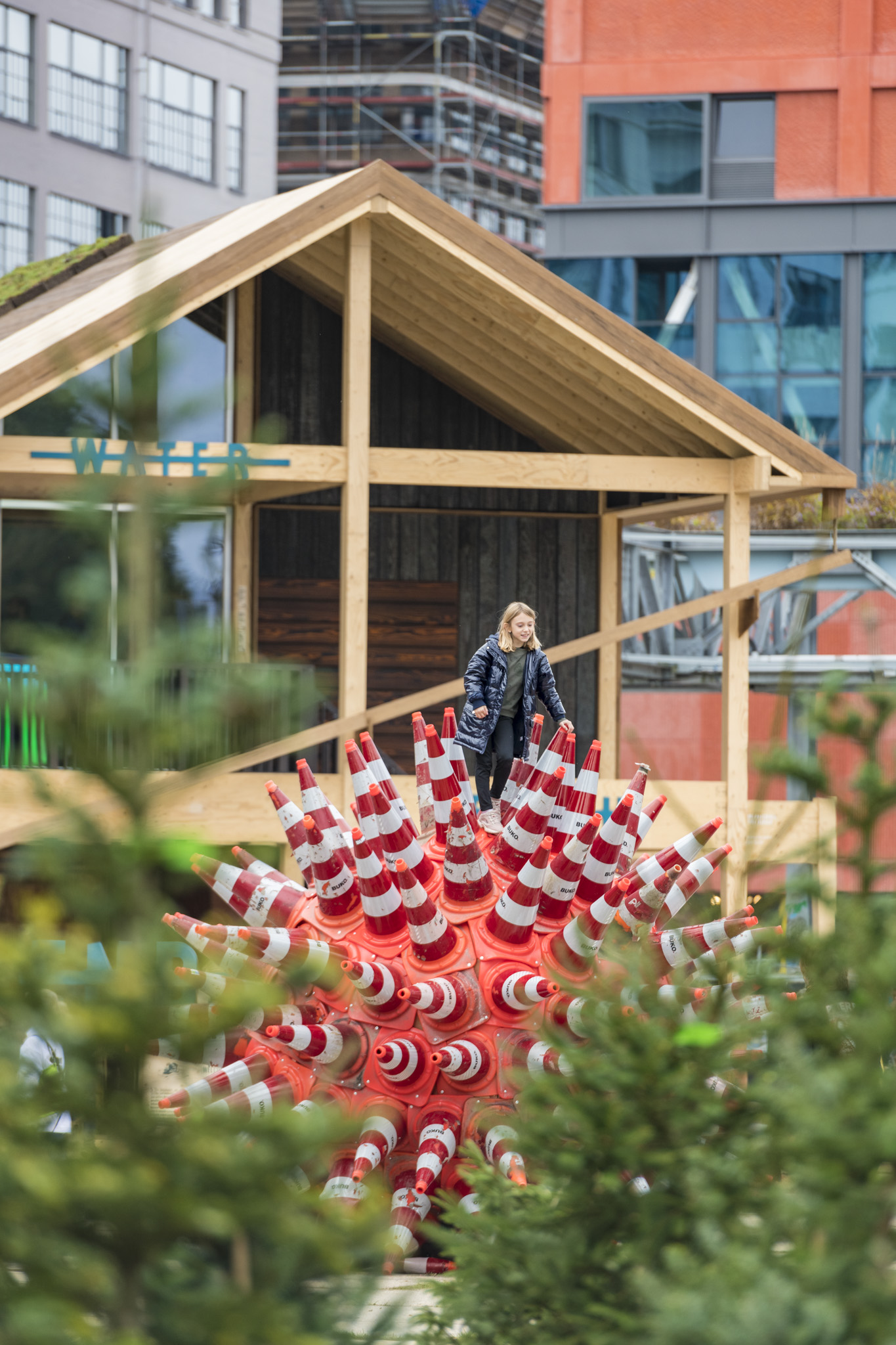
Perhaps best in show at Dutch Design Week 2021, as it has been many times before, was collective and incubator Dutch Invertual’s meticulously curated and stagged group show. For over ten years, this platform has brought together the latest and greatest Eindhoven and Netherlands-based talents to create new speculative, craft-led works based on specific briefs and topical themes. Dutch Invertuals usually presents the survey show at Dutch Design Week and Milan Design Week but has also engaged in other ventures. Developed on the heal of the pandemic-born Dutch Invertuals Academy, the Objects for a new kind of society exhibition took a broad look at the question of how we might live in our cities going forward, especially as we run out of resources and push infrastructures to their limits. “We need to rethink our relationship with objects and our role as designers within our society,” says Wendy Plomp, Dutch Invertuals design director.
Presented in partnership with trend forecasting agency The Future Laboratory, the showcase incorporated new investigative works by Johanna Seelemann, Sander Hagelaar, Christoph Deichmann, Delphine Lejeune, Edhv, Moonseop Seo, Wen Zhan, Elly Feldstein, Steeven Macal, Anna Resei, and Sorrel Madley. One highlight was Seelemann’s Hortulanus projects. Her sculptural fragments—evocative of car parts—implement natural materials like staw to question what a more nature-centric approach to technology and mass production could look like; how maintenance, change, and decay could factor into these entrenched systems.
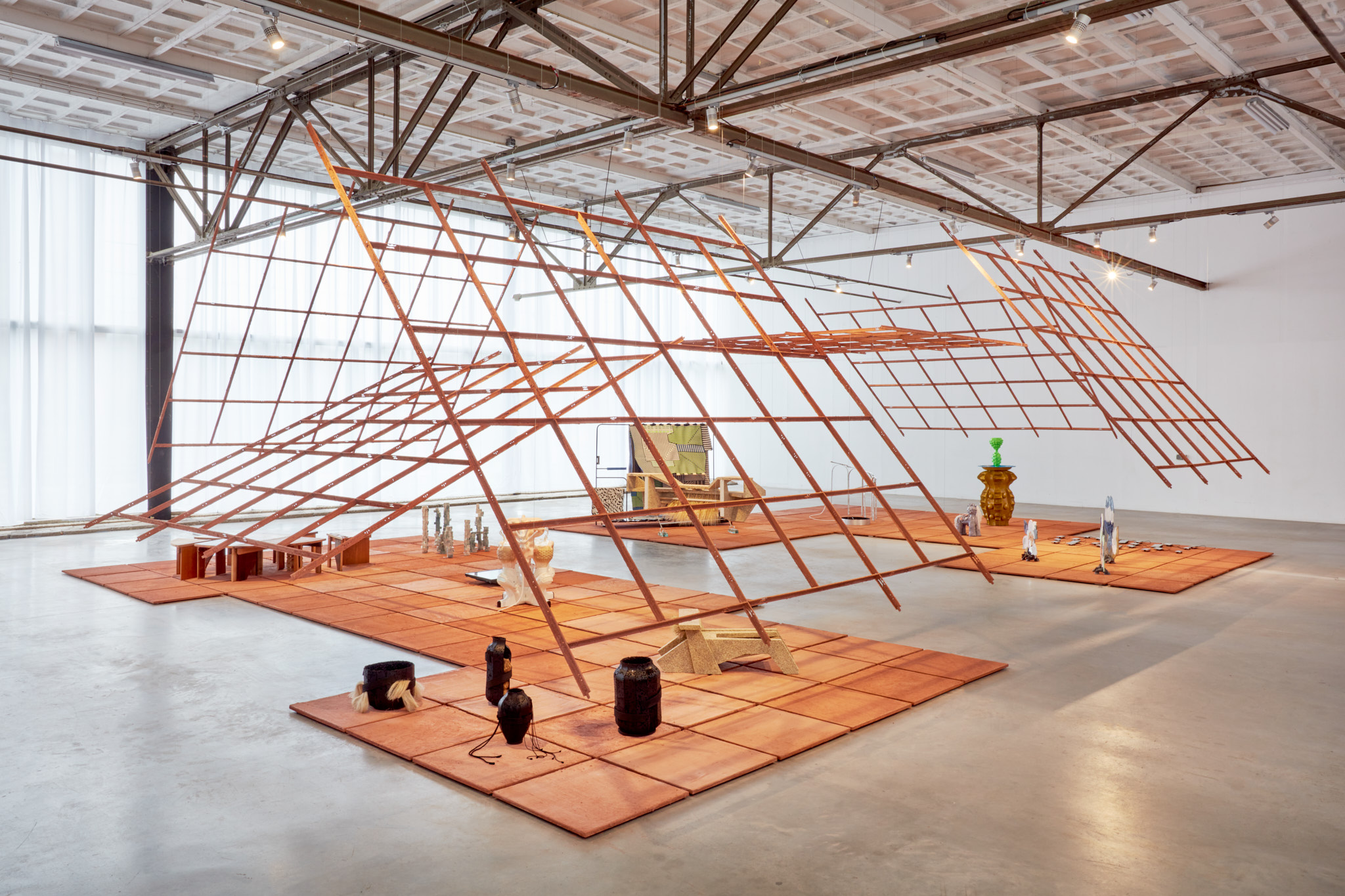
Along the same rail tracks, an exhibition entitled Cabinet of Collaboration explored how many recent graduates of The Design Academy Eindhoven and other Dutch schools forged strong connections with industry. These partnerships are far more collaborative and engaging than the standard of brands tapping recognized talents simply for their name recognition value. This emerging approach centers on shared values and ensures that designers are integral to every product development process. This activation was spearheaded by illustrious design Rick Tegelaar and Envisions—a collective of Dutch talents rapidly making names for themselves, especially in projects that deal directly with manufacturers. Some of the key pairings on view were Simone Post and legacy ceramics company Cor Unum, Raw Color and Kvadrat, Kranen/Gille Design and Best Wool Carpets, Tegelaar and Wired Collectiv.
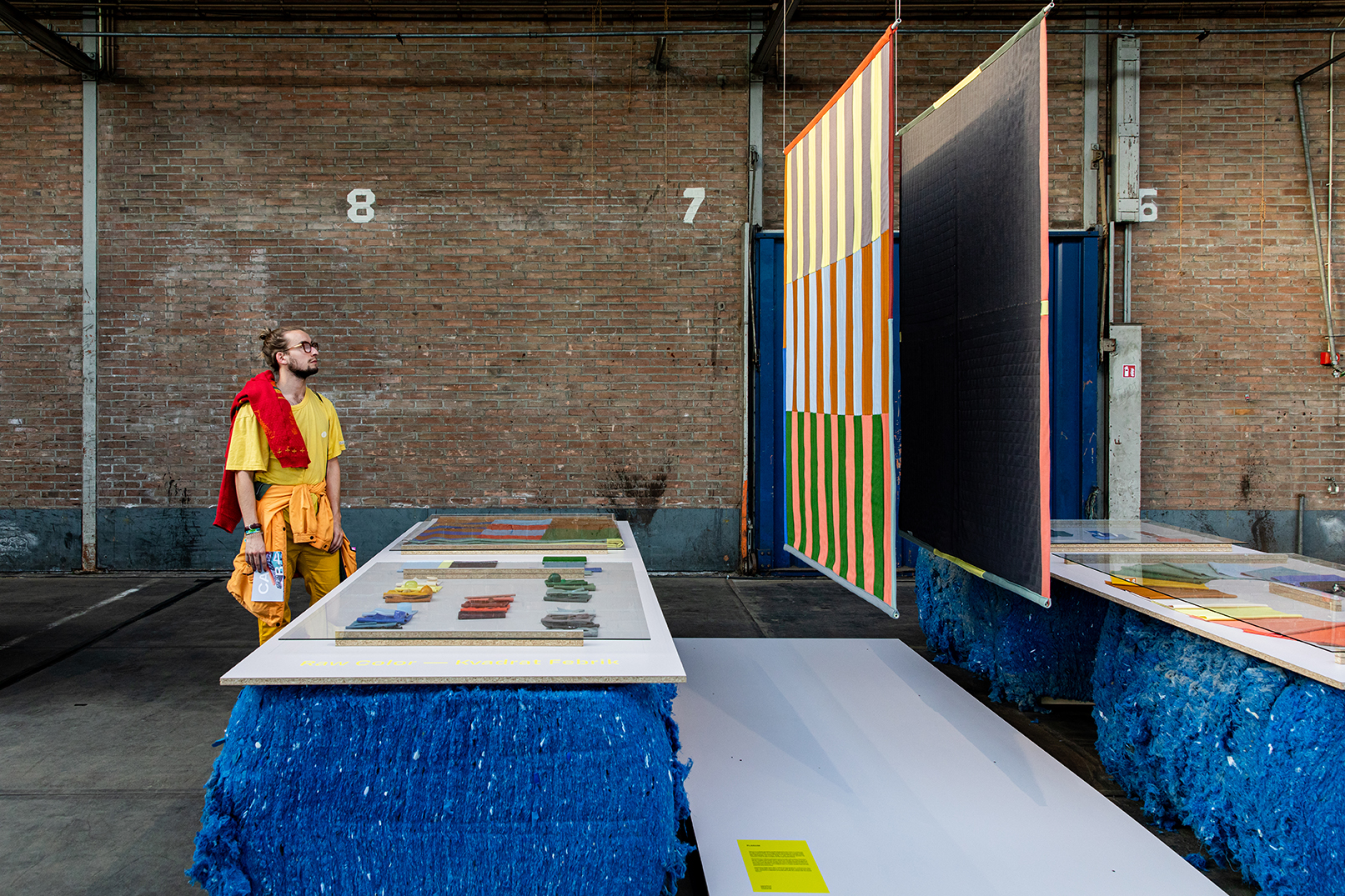
At the core of every Dutch Design Week is the Design Academy Eindhoven’s Graduation Show. Historical held within the school’s post-industrial premises, this exhaustive showcase now occupies different locales and brings the hordes of Dutch Design Week visitors to new parts of town. This year’s presentation featured a plethora of explorations and provocations that deal with consumption, environmental collapse, social inequity, responsible production, mental health, and our mitigation of increasingly rampant technologies. Though less prevalent than it might have been a decade ago, the treatment of narrative and personal reflection was still apparent in a number of thesis projects. Throughout, the ingenious craft-led use of wood, textile, found objects, ceramics, recycled styrofoam, natural fibers, color, and textures made for a remarkably diverse offering. Currently helmed by renowned curator, editor, and culturemaker Joseph Grima, The Design Academy Eindhoven is in constant reinvention, ensuring that its students remain at the forefront of the rapidly evolving and expanding domain. The school offers its pupils the space and time to experiment before they’re set free into the world. Some critics excuse the graduation show, and its many projects, of being too conceptual or inapplicable, but one could also argue: if not here and now, than where and where. As shown in the Cabinet of Collaboration exhibition, many of the graduates enter the industry with a sense of resourcefulness and quick-witted problem-solving skills that allow them to take the lead and set new standards.
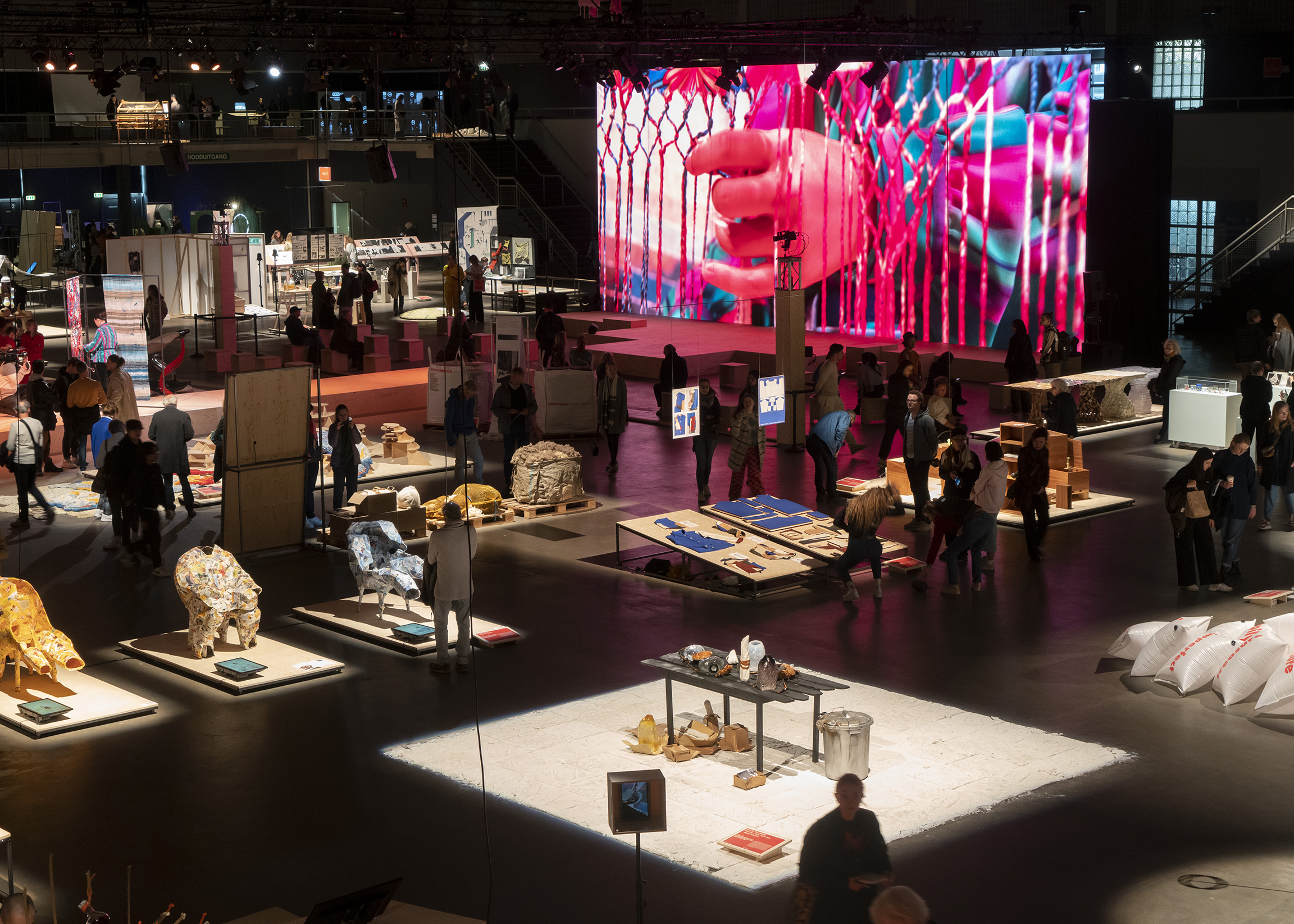
Further a-flung in Eindhoven but no less important was a series of showcases and open studios in the Sectie C complex. This burgeoning hotbed of talent incorporates close to a hundred makers, artists, and independent designers, some of which feature among the roster of leading international galleries. A particular highlight this year was the presentation of technology-driven lighting studio VANTOT. The practice’s stunning luminaries, developed for the collectible and public sectors, incorporate more intuitive solar solutions while remaining especially clean-lined and strikingly mechanical in aesthetic. Young studio Object Density reflects a similar spirit. On view next door, the sleek yet expressive Lens Luminaires collection was created using unused and discarded eyeglass inserts sourced from a local optometrist. These scultural pendants, sconces, and standing lamps are also an homage to Philips, and its role as one of the first producers of the light bulb.

If that weren’t enough, Eindhoven mainstays like Kiki & Joost and Piet Hein Eek also made a strong showing this year. The former’s Meanwhile exhibition brought together its recent products, developed for brands like Moooi and Maison Dad alongside bespoke furnishing and accessories in a deeply personal staging intended to evoke the spontaneity and creativity that can come out of unplanned or atypical circumstances. Abiding by the city’s quintessentially ad-hoc, gritty, and experimental spirit, Hein Eek fashioned a pop-up hotel within his sprawling restaurant, shop, and studio complex. Pulling up the rear of this comprehensive program was an exhibition at a local art institution Van Abbemuseum mounted by the Geo-Design platform’s Martina Muzi and Joseph Grima. he provocative display, developed with students from Muzi’s Design Academy Eindhoven Studio Technogeographies course, Geo Design: Budget Airlines explored the impact of this global sub-industry on markets, the environment, politics, and different social structures.
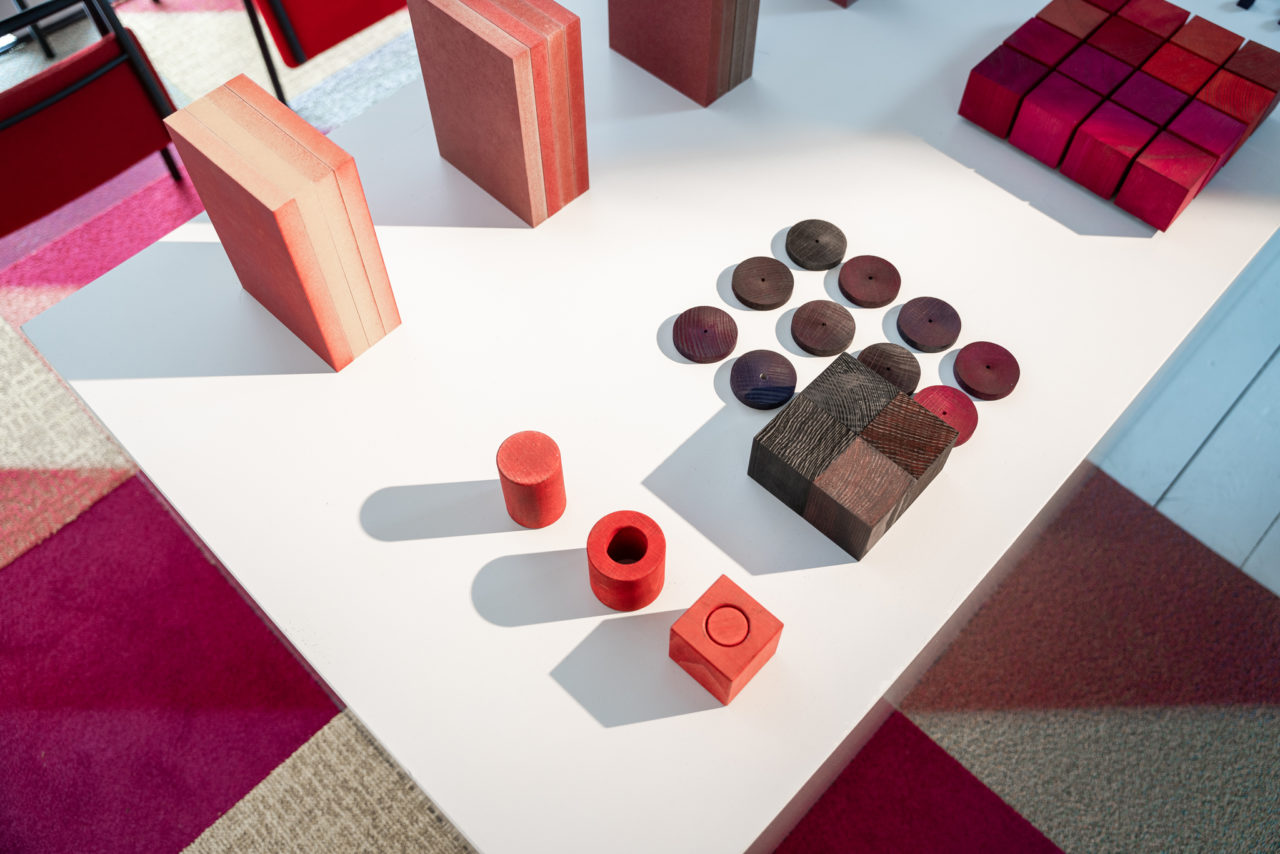
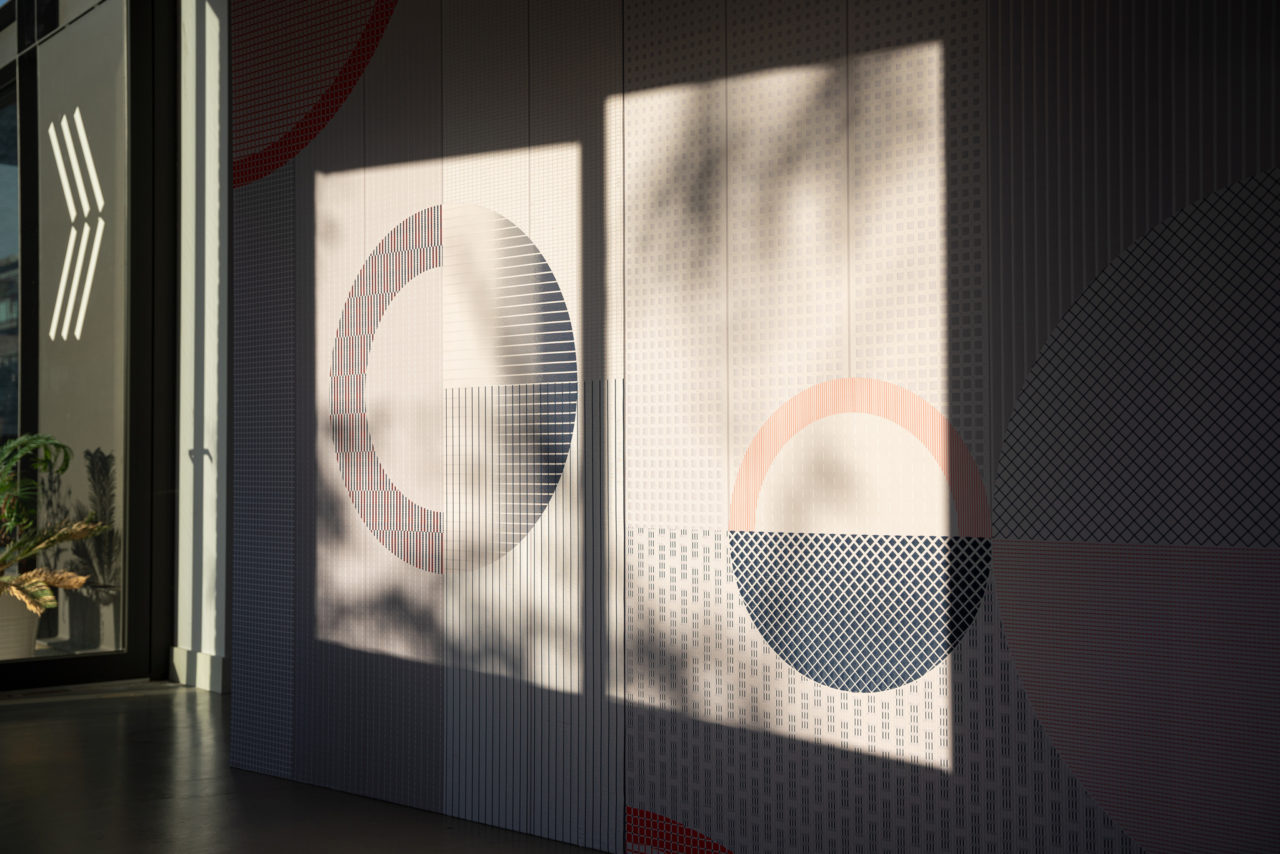
Eindhoven, The Design Academy Eindhoven, and Dutch Design Week inform the global zeitgeist in innumerable ways. In its raw, unfiltered, critical, and perhaps somewhat naive way, this trifecta plays a vital role in the larger design ecosystem. It serves as a kind of fertile crescent in this respect. With commercial players going straight to the source and taking more stock of this city, school, and event, the annual offering is sure to have even more impact in years to come. We look forward to see how things evolve.
